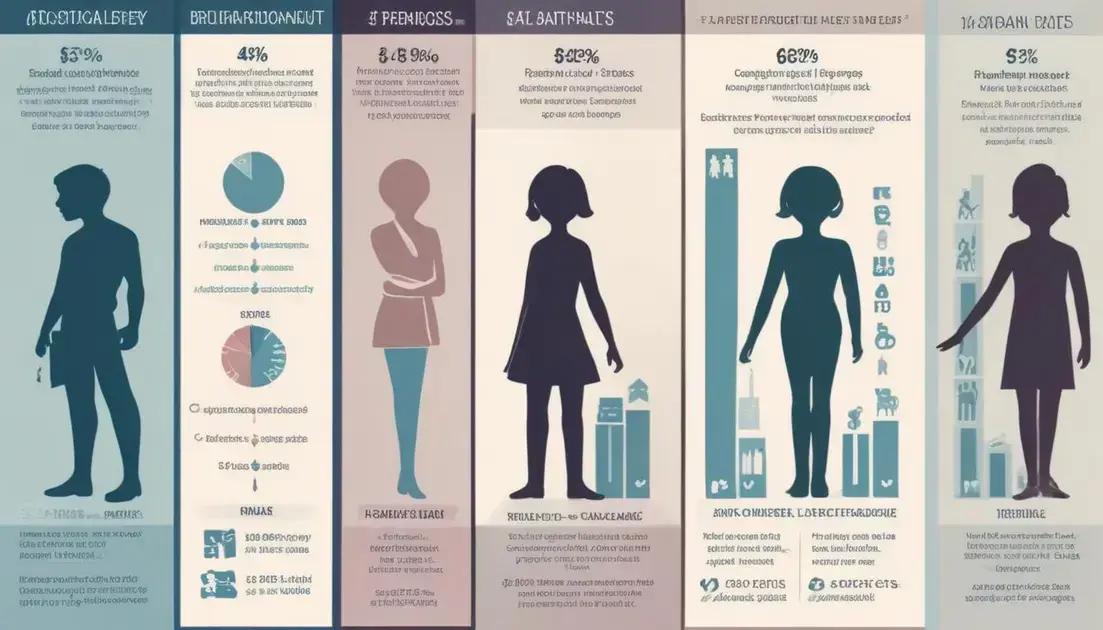April benefit rates: key insights for your financial planning

The April benefit rates are here, and they could significantly affect your financial landscape. Whether you’re receiving social security, unemployment, or other government support, understanding these monthly changes can help you plan more effectively and make informed decisions about your income.
Understanding april benefit rate changes
Monthly benefit rates undergo crucial transformations that directly impact millions of individuals and families. Understanding these periodic adjustments requires a comprehensive look at multiple factors influencing government support systems.
Federal agencies conduct systematic reviews to determine appropriate benefit rate modifications. These changes typically account for economic indicators like inflation rates, cost of living adjustments (COLA), and overall national economic health.
Key Factors Driving Benefit Rate Modifications
Several critical elements contribute to benefit rate changes, including:
- Consumer Price Index (CPI) fluctuations
- Unemployment statistics
- National economic performance
- Healthcare cost trends
Historically, April represents a significant month for potential benefit rate adjustments, as government agencies complete quarterly economic assessments and implement necessary updates.
Impact on Different Benefit Programs
Different social support programs experience rate changes with varying frequencies and methodologies. Social Security, disability benefits, veterans’ benefits, and unemployment compensation each follow unique calculation frameworks.
Beneficiaries should remain proactive by staying informed about potential modifications, reviewing official government communications, and understanding how these changes might affect their monthly financial planning.
How different programs adjust rates monthly
Monthly benefit rate adjustments vary significantly across different government programs, each employing unique methodologies to ensure accurate financial support for recipients.
Social Security Administration Approach
Social Security benefits typically undergo annual cost-of-living adjustments (COLA), calculated using the Consumer Price Index for Urban Wage Earners and Clerical Workers. While major changes occur annually, minor quarterly refinements can impact overall benefit calculations.
Unemployment Benefit Mechanisms
Unemployment compensation rates differ by state, with each jurisdiction maintaining independent frameworks for determining monthly payment levels. Factors such as previous earnings, duration of employment, and current economic conditions play crucial roles in these monthly rate determinations.
- State-specific wage replacement percentages
- Maximum weekly benefit amount variations
- Ongoing economic indicator assessments
Veterans’ Benefits Calculation
The Department of Veterans Affairs employs a complex rating system that considers disability percentages, service-connected conditions, and additional dependent factors. Monthly adjustments reflect medical evaluation updates and comprehensive service-related assessments.
Disability insurance programs similarly utilize intricate calculation models, incorporating medical evidence, work capacity evaluations, and periodic re-examinations to maintain accurate monthly benefit rates.
Key factors influencing benefit rates
Multiple complex dynamics continuously shape benefit rate determinations, creating a sophisticated ecosystem of financial support calculations.
Economic Indicators Impact
Inflation rates play a critical role in benefit rate adjustments. The Consumer Price Index (CPI) provides a fundamental benchmark for understanding purchasing power changes and necessary financial compensations.
- Annual inflation percentage
- Regional economic variations
- Nationwide economic health indicators
Demographic Considerations
Population demographics significantly influence benefit rate calculations. Factors such as age distribution, employment rates, and median household incomes contribute to comprehensive policy decisions.
Government Policy Frameworks
Federal and state legislative mandates directly impact benefit rate structures. Policy changes can rapidly transform support mechanisms, reflecting evolving social and economic priorities.
Additional critical factors include:
- Unemployment statistics
- Healthcare cost trends
- Social security trust fund sustainability
- Workforce participation rates
Periodic federal budget allocations and macroeconomic forecasts further refine these intricate benefit rate determination processes.
Comparing rates across various social programs

Different social support programs exhibit unique rate structures that significantly impact recipient financial landscapes.
Social Security vs Disability Benefits
Monthly payment variations between programs reveal complex calculation methodologies. Social Security retirement benefits typically range from $1,500 to $3,000, while disability insurance payments depend on previous earnings and disability severity.
- Average Social Security retirement payment: $1,827
- Maximum Social Security disability benefit: $3,345
- Supplemental Security Income (SSI) maximum: $914
Unemployment and Veterans’ Benefits Comparison
State-level unemployment compensation varies dramatically, with weekly benefits ranging from $235 in Mississippi to $974 in Massachusetts. Veterans’ disability compensation follows a percentage-based rating system, offering payments from $171 to $3,737 depending on disability level.
Healthcare and Support Program Variations
Medicaid, Medicare, and other healthcare support programs demonstrate significant rate disparities based on income, age, and specific medical conditions. Factors like state regulations and individual circumstances create a complex benefit landscape.
These variations underscore the importance of understanding specific program requirements and potential eligibility criteria for maximizing available financial support.
Strategies for maximizing your benefits
Navigating benefit systems requires strategic planning and proactive approaches to optimize financial support.
Documentation and Eligibility Management
Comprehensive documentation is crucial for maximizing benefit potential. Gather and maintain updated personal records, including income statements, medical documentation, and employment history to support benefit applications.
- Organize financial documents systematically
- Update personal information regularly
- Track application deadlines precisely
Income and Asset Optimization
Strategic financial management can significantly impact benefit eligibility. Consider techniques like:
- Managing reportable income levels
- Exploring asset protection strategies
- Understanding income threshold limitations
Proactive Program Exploration
Cross-program benefit analysis reveals potential additional support opportunities. Many individuals qualify for multiple assistance programs without realizing it, including:
- Supplemental Nutrition Assistance Program (SNAP)
- Housing assistance programs
- Healthcare subsidies
- Local government support initiatives
Regular consultations with benefit counselors and staying informed about policy changes can unlock unexpected financial resources.
Potential impact on household budgeting
Benefit rate changes create significant ripple effects across household financial planning strategies.
Monthly Income Allocation
Budgeting adaptation becomes crucial when benefit rates shift. Families must recalibrate spending patterns, prioritizing essential expenses like housing, food, and healthcare.
- Reassess fixed and variable expenses
- Create flexible spending categories
- Develop emergency financial reserves
Expense Management Strategies
Households can mitigate financial uncertainty through proactive planning techniques:
- Implementing cost-cutting measures
- Exploring supplemental income sources
- Negotiating existing service contracts
Long-Term Financial Planning
Benefit rate fluctuations demand dynamic financial strategies. Key considerations include:
- Retirement savings adjustments
- Healthcare cost projections
- Alternative investment opportunities
- Debt management approaches
Understanding potential benefit rate impacts enables families to create resilient financial frameworks that accommodate unexpected economic changes.
Upcoming trends in benefit rate adjustments
Emerging technological and policy developments are reshaping benefit rate adjustment mechanisms across government support programs.
Technology-Driven Calculation Models
Artificial intelligence and machine learning are transforming how benefit rates are analyzed and determined. Advanced predictive algorithms enable more precise economic forecasting and personalized benefit calculations.
- Real-time economic data processing
- Personalized benefit prediction models
- Dynamic adjustment capabilities
Policy Evolution Indicators
Future benefit rate adjustments will likely incorporate more comprehensive assessment criteria, including:
- Expanded demographic considerations
- Regional economic performance metrics
- Workforce participation rates
- Technological employment disruption impacts
Emerging Policy Frameworks
Adaptive benefit structures are gaining traction, focusing on more flexible and responsive support mechanisms that can quickly address economic changes and individual needs.
Anticipated trends suggest a move towards more individualized, technology-enhanced benefit rate determination processes that prioritize accuracy and economic resilience.
Navigating the Complex Landscape of Benefit Rates
Understanding April benefit rates requires a comprehensive approach that combines knowledge, strategic planning, and proactive financial management. The intricate world of social support programs demands ongoing attention and adaptability.
As economic landscapes continue to evolve, individuals and families must stay informed about potential changes, explore multiple support options, and develop flexible financial strategies. Technology and policy innovations are creating more dynamic and personalized benefit calculation methods.
Key takeaways include the importance of:
- Regularly reviewing benefit program eligibility
- Maintaining accurate personal documentation
- Exploring cross-program support opportunities
- Staying informed about policy and rate changes
By adopting a proactive and informed approach, recipients can maximize their financial support and navigate the complex benefit rate ecosystem more effectively.





